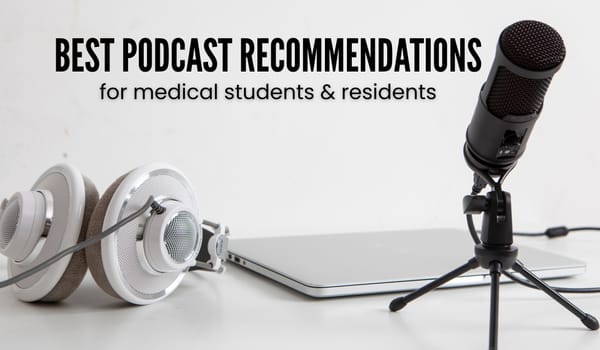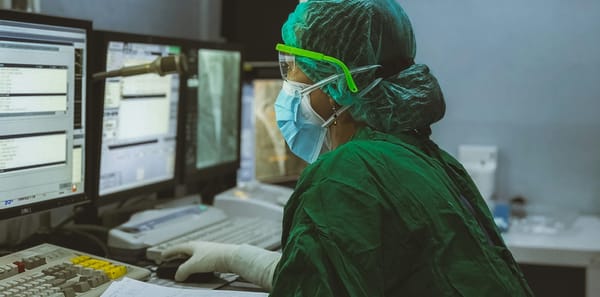Tips for Pursuing U.S. Clinical Experience
One of my most frequently asked questions these days is HOW on Earth did I land U.S.…

One of my most frequently asked questions these days is HOW on Earth did I land U.S. clinical experience in the middle of COVID? I spent about 10 weeks in the US in the fall, rotating in outpatient (private clinic) settings for OBGY, neurology and peds-neurology.
Unfortunately the answer isn’t one that will help you find your own rotation, since this was organized solely by my university. If not for this, I don’t know if I would ever have found a way to rotate in the States.
Thus, let me start by saying that a great first place to start is through your school. Try and see if they have any partnerships with any hospitals in the US — some do, although it’s more the exception than the rule.
If your school has an affiliation with ANY US hospital or private clinic, make sure you get to go. I started networking my way into this rotation in my first year! It doesn’t matter if they don’t have your intended specialty; once you’re in the States, you can ask docs to connect you with friends. For instance, my school has an alumni organization and two doctors at private clinics take students (neurology and OBGYN). Even though I’m interested in emergency medicine and thus want to rotate in EM, I asked my attendings after a few weeks of getting to know them if they had an EM friends — and they did! So far it hasn’t been completely fruitful (thanks to COVID), but it seems promising.
My Tips
In case that’s not an option for you, here are some other tips to get you started. in your search for U.S. clinical experience
- Start networking EARLY in medical school. Attend conferences – it’s a bit harder now that everything is virtual, but things will normalize eventually. Attend Zoom lectures hosted by hospitals and if someone gives their contact information, add them to your list. Seek out doctors in your intended specialty, make connections, send follow-up emails!
- My M.O. is to attend the lecture, pay attention, then send a follow-up email the next day. “Dear Dr. ____, I attended/listened to your lecture on ____ yesterday and it was really interesting, thank you. I’m a _____ in ______ aspiring to _______…” and go from there. A doc I just emailed asking for help with the Match said he remembers me from my follow-up email years ago!
- See if your alumni are currently working in the US. This is a bit harder to do, because alumni information is usually confidential. I’ve come across alumni working at all the major hospitals in the US by Googling “my university + mayo clinic” and I’ve dug around for email addresses. For us, we also have an “American Association of My University” and I was able to meet graduates who are now working in the US through there.
- Reach out to ALL the doctors you know in your intended field — ask friends for contacts, talk to friends-of-friends, and don’t be shy. Most people are more than happy to help, and those that aren’t just won’t answer.
- Join the national organization of your intended specialty. I recently discovered EMRA, the EM Resident’s Association, which I joined this past August (their annual fee for students is $60). They introduced me to a mentor and mailed me handy little pocket books, including a career advisor booklet, which is great. I also receive their newsletter AND I may have made a new contact through their partner organization, ACEP.
- VSLO is another important option. If your school is part of VSLO/VSAS (Visiting Students Learning Opportunities), you may have a much easier time finding a rotation than I did. For a list of participating institutions, check here. As I understand it, each rotation application through the website costs money, and it can be hard to find a rotation even like this, but on the flipside, you are able to apply to a lot more places.
Next up: Cold Emailing
I sent dozens of emails asking for U.S. clinical experience. Those haven’t been successful yet either (thanks to COVID, once again), but I know others who have succeeded. You can consider ‘cold-DMing’ docs on Instagram or Twitter, but this is not something I’ve dared to do.
Basic email etiquette:
- always be polite
- make sure grammar and spelling are correct
- never spam
- don’t make it too long, get to the point
- always take the time to address the program coordinator by name (Dear ____). I even took the time to Google around to see if the person in charge is a Dr. or Ms./Mr., so as not to address them improperly).
- always change the name of the program in your email
- try to find a connection — if they’re located close to your hometown, mention that you grew up there, etc.
- if something is unique about their program, mention that (i.e. one program offered students the opportunity to participate in autopsies, which was very unique and super intriguing to me)
I asked my friend to proofread my email template and she helped me make it more straightforward and less passive (which I tend to be). I recommend getting a friend or a mom or dad to read it over and make it more succinct.
Here’s my step-wise approach to cold-emailing programs:
- I decided to approach it state-by-state, focusing on IMG friendly ones. I determined which were ‘more IMG friendly’ based on the data sets of previous Match outcomes; there are also lists on the Internet. Let’s say I started with NY, for example.
- I used Freida and ResidencyExplorer to find residency programs in my intended field (EM) in New York, then looked on the university/residency website. I often searched for the words ‘visiting students’ or ‘clerkship,’ and came across the medical student rotation ‘info page.’
- side note: EMRA has a ‘clerkship map’ which features ALL the EM clerkships available in the US. You can even filter them by ‘requires VSLO’ or not. This was a great starting point for me — check for your specialties, maybe there is something similar.
- If they explicitly said they don’t take students during COVID or don’t take non-US med students, I didn’t email them. Note: if they work entirely through VSLO, I generally didn’t email them either, but it’s a bit unclear to me if a clerkship can accept students outside VSLO/VSAS if they are officially part of the program.
- When they didn’t specify, I sent a letter of interest (“I’d love to do an EM rotation here.”). Most didn’t answer, some said “no IMGs, sorry,” some said, “COVID, check back later.”
- For those who said ‘check back later,’ I marked it with a Gmail ‘label’ and planned to send a follow-up.
- I’ll keep doing this until I find an institution willing to take me.
The final option (the last resort, because of the sheer cost): rotation companies. There are numerous companies that offer rotations, for a cost. The challenge is multifold:
- it’s expensive (1.5-4k per rotation)
- it’s hard to know if the company is trustworthy (mixed reviews online, shady business dealings)
- LORs may not be so genuine and thus less valuable
I’ll list some of the ones that I’ve heard of — this is by no means an endorsement, because I know nothing about them and haven’t used any. Here are some common ones that come up:
If you have experience with any of these and can give us an honest review, we’d love to hear! I am definitely considering one of these options as a last resort, but I have the unique challenge that certain (many) places don’t offer anything in Emergency Medicine, so that’s tough. Before I invest in any of these companies, I will exhaust all my other options and read as many reviews on Discord/Reddit/forums as I can.
– – – – – – – – – – – – – – – – – – – – – – – – – – – – – – – – – – – – – – – – – – – – – – – – – – – – – – – – – – – – – – – – – – – – – – – – – – – – – – – – – – – – – – – –
I hope that was helpful. Good luck pursuing your own U.S. clinical experience and best of luck with Match.
Check out my other blog post dedicated to tips and tricks for the NRMP Match here.




